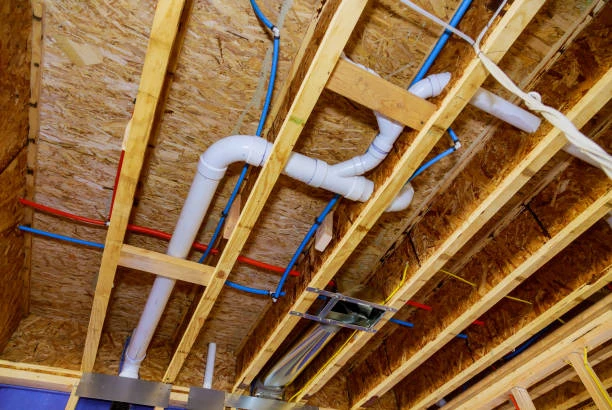As we look towards 2024, the global market for plastic pipes fittings is set to experience significant growth. Driven by urbanization, infrastructure development, and the increasing demand for sustainable materials, plastic pipes fitting are becoming an essential component in various industries. In this article, we will explore the opportunities in this thriving market and the factors contributing to its expansion.
Understanding Plastic Pipes Fittings
Plastic pipes fittings are critical components used to connect, redirect, and manage fluid flow in plumbing and infrastructure systems. Typically made from materials such as polyvinyl chloride (PVC), polypropylene (PP), and polyethylene (PE), these fittings offer a range of advantages over traditional metal fittings, including:
- Lightweight Nature: Easier to handle and transport, reducing overall installation costs.
- Corrosion Resistance: Unlike metal, plastic fittings do not rust, making them suitable for various environments.
- Cost-Effectiveness: Lower initial costs and reduced maintenance requirements make plastic fittings a financially sound choice for many applications.
Key Drivers of Growth
Several factors are contributing to the growth of the plastic pipes fitting market in 2024:
1. Urbanization and Infrastructure Development
With the global population continuing to rise, urban areas are expanding rapidly. This urbanization drives the demand for new infrastructure, including residential buildings, commercial complexes, and transportation networks. As a result, the need for reliable plumbing and drainage systems is on the rise, positioning plastic pipes fittings as a preferred choice due to their durability and ease of installation.
2. Water Management Initiatives
Global water scarcity is becoming an increasingly pressing issue. Governments and organizations are investing in water management initiatives to improve efficiency and sustainability. Plastic pipes fitting play a crucial role in these systems, allowing for better water distribution and management, thereby enhancing conservation efforts
3. Growing Awareness of Sustainable Solutions
As awareness of environmental issues grows, industries are increasingly shifting towards sustainable materials. Plastic pipes fitting, which are often recyclable and have a lower environmental impact during production, align with this trend. Companies are actively seeking out eco-friendly alternatives, making plastic fittings a viable option.
Market Segmentation
The plastic pipes fittings market can be segmented into various categories based on material, application, and end-use:
By Material
- PVC Fittings: Commonly used for plumbing, drainage, and irrigation.
- Polypropylene Fittings: Ideal for chemical handling and high-temperature applications.
- Polyethylene Fittings: Used for gas distribution and water supply.
Application
- Residential: Plumbing systems in homes and apartments.
- Commercial: Larger-scale plumbing in office buildings and shopping centers.
- Industrial: Heavy-duty applications in manufacturing and processing.
End-Use Industry
- Construction: Residential and commercial building projects.
- Agriculture: Irrigation and drainage systems.
- Municipal: Water supply and wastewater management.
Competitive Landscape
The plastic pipes fittings market is characterized by a mix of established players and emerging companies. Key players are focusing on product innovation, quality improvements, and expanding their geographic presence to capture a larger market share. Strategic partnerships and collaborations with construction and infrastructure firms are becoming common as companies seek to enhance their competitive edge.
While the opportunities in the plastic pipes fittings market are substantial, several challenges need to be addressed:
1. Regulatory Compliance
Manufacturers must navigate various regulations regarding the materials and production processes of plastic fittings. Compliance with international standards can be complex and costly, requiring continuous investment in quality control and testing.
2. Competition from Alternative Materials
Although plastic pipes fittings offer numerous advantages, they face competition from alternative materials such as metal and composite fittings. Companies must continuously innovate to maintain their market position.
3. Environmental Concerns
While many plastic fittings are recyclable, concerns about plastic waste and environmental pollution persist. Companies must focus on sustainable practices and materials to alleviate these concerns and improve their public image.

Conclusion
The global market for plastic pipes fittings presents numerous opportunities in 2024, driven by urbanization, sustainable practices, and water management initiatives. As industries increasingly seek reliable and cost-effective solutions, plastic fittings effectively meet these demands. Companies that embrace innovation, sustainability, and strategic partnerships will thrive in this evolving landscape.
FAQs
1. What are plastic pipes fittings?
Plastic pipes fittings connect and redirect pipes in plumbing and infrastructure systems and consist of materials like PVC, polypropylene, and polyethylene.
2. What are the advantages of using plastic pipes fittings?
Advantages include lightweight nature, corrosion resistance, cost-effectiveness, and lower maintenance requirements compared to metal fittings.
3. How is the plastic pipes fittings market expected to grow in 2024?
The market is expected to grow due to urbanization, increased demand for sustainable materials, and water management initiatives.
4. What materials do people commonly use for plastic pipes fitting?
Common materials include PVC, polypropylene, and polyethylene, each suited for different applications and environments.
5. What challenges does the plastic pipes fitting market face?
Challenges include regulatory compliance, competition from alternative materials, and environmental concerns regarding plastic waste.